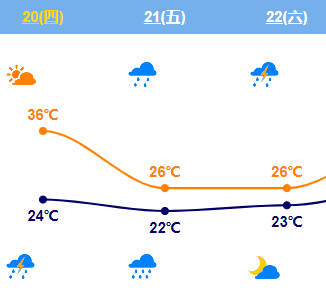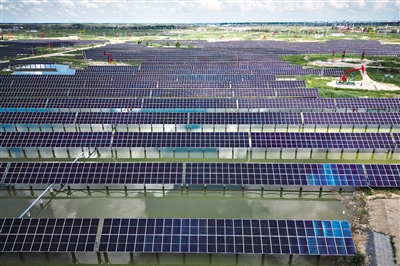
Spark water surface photovoltaic demonstration project in Daqing Oilfield is the first water surface photovoltaic project of China Petroleum. Reporter Zhang Tao photo
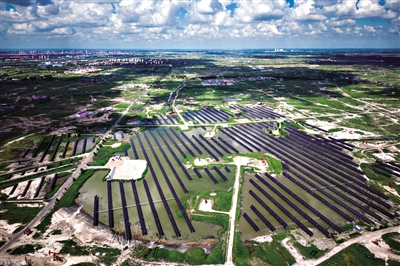
This is the surface photovoltaic project of Spark in Daqing Oilfield (photo of UAV). Reporter Zhang Tao photo
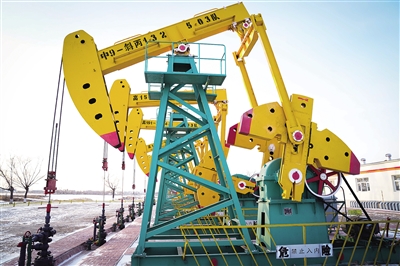
Cluster Well Group 2 in Daqing Oilfield. Reporter Wang Song photo
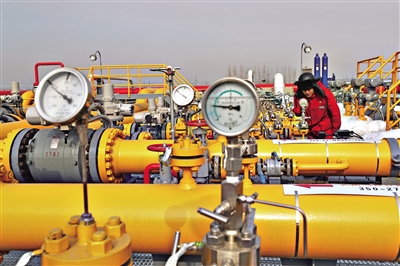
Workers patrol the operation area of gas storage group in Liaohe Oilfield. Reporter Yang Qing photo
Rows of dark blue photovoltaic panels are arranged in a matrix in the sun, white fans turn huge blades to output clean electricity, and "green" exploration again and again continues to create a new engine of high-quality development … … On the black land, the old oil fields in Northeast China compete for the new track of "scenery" energy, accelerate the green transformation in an all-round way and show more new "scenery".
Energy industry is a key industry in peak carbon dioxide emissions and carbon neutrality in China. In 2022, the crude oil output of the three northeastern provinces was 43.75 million tons, accounting for 21.4% of the country. While striving to maintain stable production, a number of old oil fields in Northeast China have taken advantage of the situation to vigorously develop new energy business, pay attention to ecological protection and build green and beautiful oil fields.
Chasing light and electricity
Daqing City, Heilongjiang Province, far away from the open suburbs of the urban area, the wind is already cold.
At the well site of Gulong shale oil experimental area in Daqing Oilfield of China Petroleum, the electricity consumption for field production and daily life is normal. What brings "light" is skid-mounted power generation equipment consisting of more than 200 photovoltaic panels. By using the combination of photovoltaic panels and storage batteries, it can provide uninterrupted power supply for 24 hours.
Li Dongxu, deputy head of the Engineering Technology Group of Daqing Oilfield Shale Oil Exploration and Development Command, said that these photovoltaic devices can be disassembled and transferred at any time, and even in the cold winter, oil people working in the field can live in warm houses, eat hot meals and take hot baths.
Daqing, the oil city, is also known as the "city of 100 lakes", with more than 200 lakes.
In the first oil production plant of Daqing Oilfield, Qunying Xibao and Beizhan Bubble, pieces of photovoltaic panels were spread out on the water surface in an orderly manner, and the photovoltaic demonstration project of Spark water surface in Daqing Oilfield realized grid-connected power generation in July 2022.
This is the first surface photovoltaic project in China petroleum system. The whole project uses two water surfaces, with a construction land of 400,000 square meters and an installed capacity of 18.73 MW, which can generate 27.5 million kWh of electricity annually and reduce carbon dioxide emissions by 22,000 tons.
Pang Zhiqing, executive deputy director of the New Energy Division of Daqing Oilfield, said that Daqing Oilfield has set up a leading group for new energy work, insisted on "grasping new energy like oil and gas production" and accelerated the construction of an integrated demonstration base for "hydrogen storage in scenery and gas". Driven by various measures, the cumulative power generation of new energy projects in Daqing Oilfield in 2022 exceeded 100 million kWh.
Incorporating new energy business into the main business development witnessed the new exploration of sustainable development of resource-based enterprises.
As the largest production base of heavy oil and high pour point oil in China, Liaohe Oilfield, located in Liaoning Province, is a large capacity and energy consumer.
Sea breeze blowing gently, Bibo Wan Li. In Jinhai Oil Production Plant of Liaohe Oilfield, more than 10,000 solar photovoltaic panels are closely laid, which is spectacular. With an average daily power generation capacity of 20,000 kWh, they continuously provide green electricity to oil wells.
In recent years, Liaohe Oilfield has made full use of the rich land and scenery resources in the oil region to carry out distributed photovoltaic construction, and has now put photovoltaic projects into use in more than 250 well sites. Liaohe Oilfield plans to achieve a clean energy utilization rate of 50% in 2025.
In the past two years, in addition to daily care of oil and water wells, Ma Tianchi, a 45-year-old oil producer in Jilin Oilfield, has added an item to his work, namely, maintaining more than 500 photovoltaic panels, which can meet the daytime electricity demand of 72 oil and water wells.
This is a microcosm of Jilin Oilfield’s efforts to develop new energy. Jilin Oilfield brought the new energy business into the "14th Five-Year Plan", which was deployed and implemented together with oil and gas production.
On August 4th this year, the photothermal system of Block III of Xinli Oil Production Plant in Jilin Oilfield was officially put into operation, marking the completion and operation of the zero-carbon demonstration zone of oil production platform cluster on the largest continent in Asia, producing "zero-carbon crude oil" — — All the energy used in crude oil production is supplied by clean energy, thus achieving zero carbon emission in crude oil production.
Swallow wind and spit electricity.
Northeast China is rich in scenic resources, and the utilization of clean energy, wind energy, is being accelerated in some oil fields in Northeast China.
According to previous calculations, the combined installed capacity of scenic resources in western Jilin Province reached 115 million kilowatts, but the degree of early development was only about 8%, which has great development potential. In October 2021, Jilin Province launched the "Three Gorges with Land Scenery" project.
Jilin Oilfield seized this opportunity, took advantage of its abundant scenic resources, land mining rights, engineering operation experience and other advantages, and took the lead in launching the first large-scale green electricity self-consumption project in China petroleum system — — 150,000 kW scenery power generation project.
On December 26, 2022, the first wind turbine of the 150,000 kW scenery power generation project was officially connected to the grid to generate electricity on the bank of Chagan Lake. On March 17th, 2023, with the successful grid connection of Meizi Wind Farm, all the projects were successfully put into operation.
According to the evaluation of Jilin Oilfield, the annual power generation capacity of the 150,000 kW scenery power generation project can reach 360 million kWh, saving 110,900 tons of standard coal and reducing carbon emission by 282,000 tons. All the generated power will be used for self-consumption of electricity for oil and gas production in Jilin Oilfield, enabling the construction of green and low-carbon new oilfields.
As old oilfields with decades of exploitation history, anniversary Oilfield, Liaohe Oilfield and Jilin Oilfield have passed the green and low-carbon transformation, and pressed the fast-forward key of clean energy substitution and high-quality development.
At the site of Longyilian Wind Power Project of No.9 Oil Production Plant in Daqing Oilfield, the blades of the "big windmill" rotate and the wings "generate wind". Longyilian Wind Power Project of No.9 Oil Production Plant is the first wind power utilization project in Daqing Oilfield. On March 25th this year, the first wind turbine of the project was officially connected to the grid for power generation.
In Panjin, Dalian, Yingkou and other places in Liaoning Province, the construction of offshore wind power projects in Liaohe Oilfield is also advancing rapidly.
On October 14th this year, the foundation pouring of the first wind turbine of the 550,000 kW wind power project in Ange, Jilin Oilfield was completed, and the largest wind power project under construction in Jilin Province officially entered the main project construction stage. The project is expected to be completed in July 2024, when the annual green power generation will reach 1.63 billion kWh.
"The development of new energy business is highly compatible with local industrial policies, and we are accelerating the construction of a new pattern of multi-energy complementarity and green development." Ma Xiaohong, the person in charge of the New Energy Division of Jilin Oilfield, said.
policy to adopt a balanced energy mix
"Pursuing the wind day by day" is a microcosm of the active implementation of green, low-carbon and high-quality development in the old oil fields in Northeast China in recent years, and the construction of beautiful green oil fields is also reflected in all aspects.
Jilin Oilfield not only gradually replaces green electricity through wind and light power generation projects, but also partially replaces natural gas heating through geothermal and air source heat, which can reduce the annual consumption of natural gas by 600,000 cubic meters. In addition, combined with new technologies such as carbon dioxide capture, utilization and storage, zero carbon production has been realized.
Wang Feng, manager of CO2 capture, storage and enhanced oil recovery development company in Jilin Oilfield, said that Jilin Oilfield has made great efforts in CO2 capture, utilization and storage technology in recent years, which can capture and inject CO2 generated in industrial production into underground reservoirs, thus enhancing oil recovery. As of September 1 this year, the cumulative injection of carbon dioxide in Jilin Oilfield has exceeded 3 million tons, equivalent to planting 27 million trees.
90% of the oil reserves in Yushulin Oilfield of Daqing Oilfield are distributed in Fuyang oil layer with low permeability, and the traditional water flooding method is not easy to enter the pores. According to the staff of Yushulin Oilfield, they used carbon dioxide flooding technology to inject carbon dioxide originally discharged into the air into the ground, making carbon dioxide "waste" into "treasure".
More than that, every year, Daqing Oilfield needs to treat about 600 million tons of produced water, and direct discharge will cause serious pollution. Daqing Oilfield continues to build and improve the oily sewage treatment station and pipe network, and all the sewage is injected back into the oil layer after reaching the standard, realizing "zero discharge". The reinjection layer also solves the problem of formation pressure drop after crude oil exploitation, and "waste liquid" becomes "water supplement", killing two birds with one stone.
What about oily sludge? Into the second oily sludge treatment department of Qingshui Operation and Maintenance Management Company of Daqing Oilfield Water Company, the oily sludge was treated by a series of procedures, and the harmful substances were eliminated. Niu Qingjun, the vice captain of the Second Division, grabbed a handful of treated black soil and said, "It is almost the same as ordinary soil, and it is used to plant flowers, pave roads and pad well sites."
510 mu of carbon neutral ecological park will be built, which can absorb more than 7200 tons of carbon dioxide in 20 years; Realize the reclamation of 860 abandoned well sites and build a demonstration area of ecological management … … Daqing Oilfield vigorously implements the three steps of "clean substitution, strategic replacement and green transformation" and takes the overall deployment, running out of the overall transformation and development acceleration of green oilfield.
Daqing Oilfield Carbon-neutral Ecological Park integrates forest carbon sink, popular science sightseeing, leisure and entertainment, and the first carbon-neutral forest of China Petroleum is located here.
Yu Hongjun, general manager of Seedling Company of Daqing Oilfield Ecological Environment Protection Company, said that in the past, this was an abandoned place after the relocation of the family area. The company demolished illegal construction, leveled the land, restored vegetation and built gardens. Carbon neutral forest settled here in 2020, and now it has become a well-known punching place in online celebrity. On May 27th this year, the ecological park was officially opened to the public, and received tens of thousands of tourists in the first month.
It is understood that China Petroleum released "China Petroleum Green Low-carbon Development Action Plan 3.0" in June last year, striving to achieve "peak carbon dioxide emissions" around 2025, and achieving "near-zero" emissions around 2050 when the green zero-carbon energy supplied outside exceeds the fossil energy consumed by itself. China Petrochemical, China CNOOC and other oil companies have also put forward a number of effective measures in the development of carbon emission reduction.














